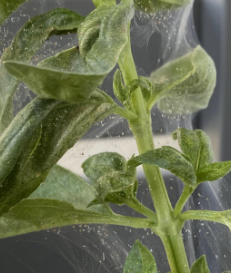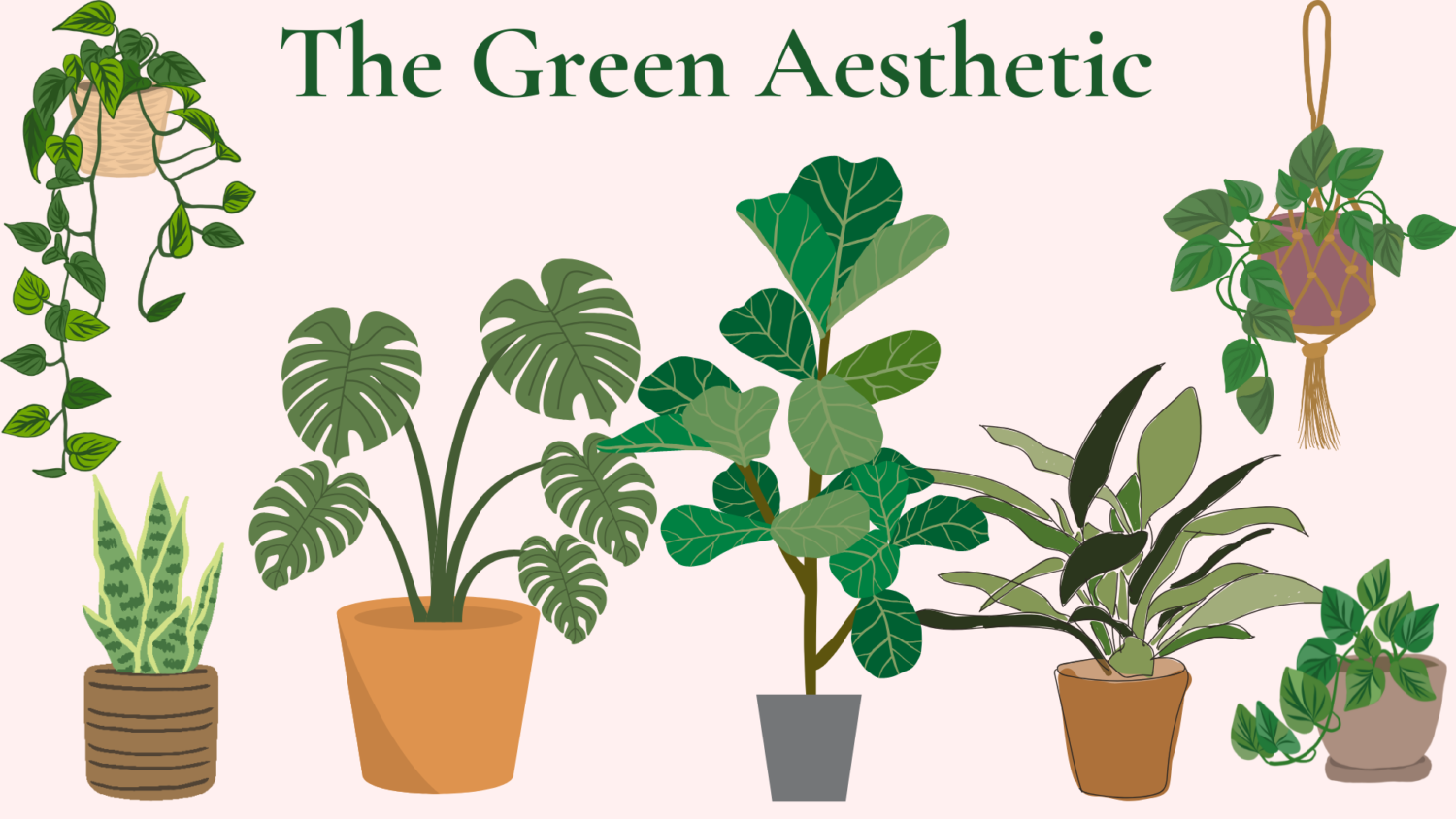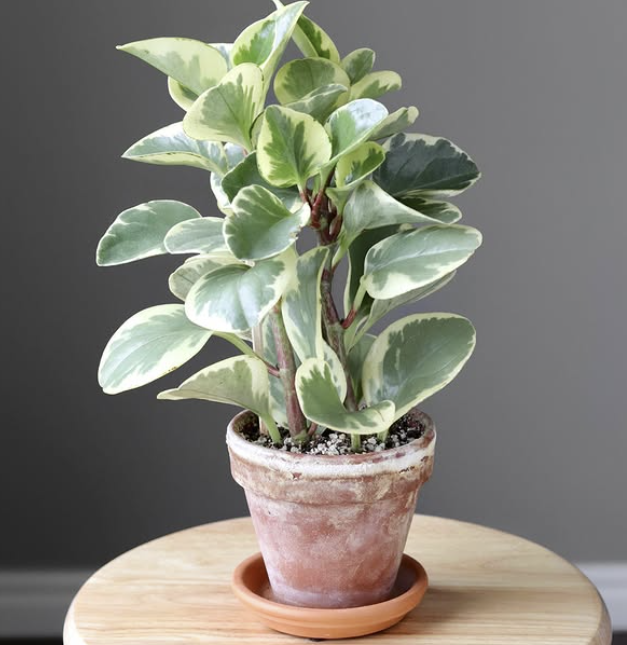The Baby Rubber Plant, or Peperomia obtusifolia, is a popular, low-maintenance houseplant admired for its compact size, succulent-like leaves, and ease of care.
Perfect for both beginners and seasoned plant enthusiasts, this ideal choice adds greenery to small spaces without much fuss.
Despite its name, the Baby Rubber Plant is not related to rubber plants like Ficus elastica.
Instead, it belongs to the Piperaceae family and originates from the lush rainforests of South America, where its adaptability and unique features have earned it a place in many houseplant collections.
Why Choose a Baby Rubber Plant?
This popular houseplant is prized for its glossy green leaves and ability to thrive with minimal care. It’s also safe for furry friends, making it an excellent choice for pet owners.
The Peperomia obtusifolia plants bring a lush, natural beauty to any houseplant collection while staying manageable in size.
Light Requirements
Peperomia obtusifolia plants thrive in bright indirect light, although they can tolerate lower light levels. Direct sunlight can scorch their thick leaves, while too little light may cause leggy growth.
A bright spot near a window with filtered light is perfect. If natural light is limited, consider supplementing with fluorescent lights or a grow light.
Temperature and Humidity
Baby Rubber Plants prefer temperatures between 65°F and 80°F, mimicking their tropical origins. Avoid exposing them to cold drafts or temperatures below 50°F, which can cause brown spots or drooping leaves.
While adaptable to average indoor conditions, these plants benefit from higher humidity. Place them in humid areas like kitchens or bathrooms or use a pebble tray or humidifier to maintain optimal conditions.
Watering
A key part of baby rubber plant care is watering correctly. Allow the top inch of soil to dry out before watering again.
Overwatering can lead to root rot and wet soil, while underwatering may cause the bottom leaves to droop. Use a well-draining soil and pots with drainage holes to prevent soggy conditions.
Soil Needs
The best soil for the American Baby Rubber Plant is a mix that retains some moisture but doesn’t stay too wet.
Combine regular potting mix with coco coir, perlite, or orchid bark for improved aeration. Alternatively, use a succulent mix, which allows water to drain effectively.
Pruning
Minimal pruning is required for these compact plants, but removing yellow leaves, leggy stems, or damaged foliage promotes new growth. Use clean shears to trim just above a leaf node for best results.
Propagation
Stem cuttings and leaf cuttings are the easiest ways to propagate a Baby Rubber Plant. After cutting a healthy stem, allow it to callous for a day or two, then place it in water or soil.
Within a few weeks, new plants should form, ready to join your houseplant collection.
Potting and Repotting
Proper potting is essential for keeping your Baby Rubber Plant healthy and thriving. Choose a pot with drainage holes to ensure excess water can escape and avoid the risk of root rot caused by soggy soil.
The pot size should complement the compact size of the plant, leaving enough room for roots to grow but not so large that the soil stays wet for too long.
When to Repot
The Baby Rubber Plant is a slow-growing plant, so it doesn’t need frequent repotting. Typically, repot every 2–3 years or when you notice:
- Roots growing out of the pot’s drainage holes.
- Stunted growth despite proper care.
- Soil that becomes compacted and drains poorly.
Repotting is best done during the growing season (early spring to summer) when the plant can recover quickly.
How to Repot
- Gently remove the plant from its current pot, taking care not to damage the thick leaves or delicate roots.
- Shake off excess soil and inspect the roots for signs of rot or damage. Trim away any unhealthy roots with sterilized scissors.
- Choose a slightly larger pot and fill it with a well-draining soil mix. A combination of regular potting soil and coco coir, perlite, or orchid bark works well.
- Place the plant in the new pot, ensuring the root ball is centered, then fill in around it with fresh soil.
- Water lightly to help the plant settle into its new environment, and allow the top inch of soil to dry out before watering again.
Fertilizing
During the growing season (spring and summer), feed the plant with a balanced fertilizer diluted to half strength every 4–6 weeks. Avoid fertilizing in fall and winter when the plant’s growth slows. Over-fertilizing can lead to nutrient buildup and brown spots on the leaves.
Common Issues and Solutions
Pests
While generally pest-resistant, Baby Rubber Plants may encounter:

Spider Mites: These pests create small webs and can discolor leaves. Treat with neem oil or insecticidal soap.
Mealybugs: These appear as white, cottony spots and can damage new growth. Remove them with a cotton swab dipped in rubbing alcohol.
Diseases
The most common disease affecting Peperomia obtusifolia plants is root rot, caused by overwatering or poorly draining soil. Signs include yellow leaves and mushy roots. Prevent this by ensuring the soil dries out between waterings and using a pot with drainage holes.
Where to Place Your Baby Rubber Plant
Thanks to their compact size, Baby Rubber Plants are perfect for shelves, desks, and bedside tables. Their lush foliage makes them a focal point in small spaces or a vibrant addition to a bedroom corner.
Toxicity
The American Baby Rubber Plant is non-toxic, making it a safe houseplant for homes with pets or children.
Baby Rubber Plant Varieties
The Peperomia obtusifolia genus includes several striking varieties:
- Peperomia obtusifolia variegata: Features stunning green-and-cream leaves.
- Peperomia obtusifolia green: A classic with solid dark green leaves.
- Pepper Face Plant: A charming nickname for this delightful species.
Difficulty Level
The Baby Rubber Plant is widely regarded as an easy-care houseplant, making it a top choice for plant enthusiasts and beginners alike.
Its low-maintenance nature, adaptability to various indoor conditions, and resistance to pests make it an ideal choice for anyone looking to grow their houseplant collection.
Final Thoughts
The Baby Rubber Plant is an ideal choice for beginners and plant enthusiasts alike. With proper plant care, this popular houseplant can thrive for a long time in your home, adding natural beauty and charm to your space.
Its low maintenance requirements, glossy green leaves, and adaptability make it one of the best plants for any indoor environment.
Follow these care tips, and your Baby Rubber Plant will become a thriving, standout member of your houseplant collection!
Frequently Asked Questions About Baby Rubber Plants
Why is my Baby Rubber Plant falling over?
A Baby Rubber Plant may fall over due to several reasons, including overwatering, underwatering, or weak stems caused by insufficient light. Check the soil moisture to ensure it’s not too wet or too dry. If the plant isn’t receiving enough bright indirect light, the stems may become leggy and weak. Moving it to a better-lit location or using a grow light can help.
Why is my Baby Rubber Plant yellow?
Yellow leaves are often a sign of overwatering, which leads to soggy soil and potential root rot. Ensure the pot has drainage holes and that you allow the top inch of soil to dry out before watering again. Other causes include low light or nutrient deficiencies. Providing bright indirect light and a balanced fertilizer during the growing season can help address the issue.
Why is my Baby Rubber Plant dropping?
Drooping leaves typically indicate underwatering or temperature stress. Check the soil moisture—if the soil is completely dry, it’s time to water. Extreme conditions like cold drafts or high temperatures can also cause stress. Keep your plant in a consistent environment with temperatures between 65°F and 80°F, away from air conditioners or heaters.
Why are the leaves of my Baby Rubber Plant curling?
Curling leaves are usually caused by low humidity, underwatering, or pest infestations like spider mites. Increase the humidity by misting the plant or placing it near a humidifier. Ensure the soil is slightly moist but not wet. If pests are present, treat the plant with neem oil or insecticidal soap.
Why is my Baby Rubber Plant leggy?
Leggy growth occurs when the plant is not receiving enough light, causing it to stretch toward the light source. Move your Baby Rubber Plant to a location with bright indirect light or supplement with fluorescent lights. Prune leggy stems to encourage new growth and a fuller shape.
Do Baby Rubber Plants like to be root bound?
Baby Rubber Plants don’t mind being slightly root bound, but they should be repotted every 2–3 years to prevent them from becoming overly cramped. When repotting, choose a larger pot with well-draining soil to support healthy growth.
Do Baby Rubber Plants like to be misted?
Yes, Baby Rubber Plants enjoy occasional misting, especially in low-humidity environments. Misting helps maintain the humidity levels they prefer but avoid over-misting, as consistently wet leaves can encourage fungal issues.
Do Baby Rubber Plants like coffee grounds?
It’s best to avoid using coffee grounds directly in the soil, as they can make the soil too acidic and retain excess moisture. If you’d like to use coffee grounds, compost them first to create a more balanced nutrient source for your Baby Rubber Plant.
Do Baby Rubber Plants climb?
No, Baby Rubber Plants are not climbers. Unlike vining or trailing plants, they grow upright and maintain a compact, bushy shape. This makes them ideal for small spaces and tabletops.
How big can Baby Rubber Plants get?
Baby Rubber Plants remain relatively small, reaching an ultimate height of 10–12 inches. Their compact size makes them perfect for desks, shelves, and other small spaces in your home.

